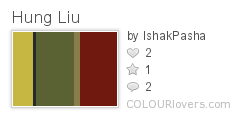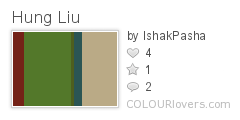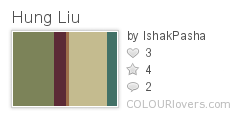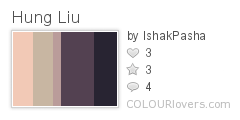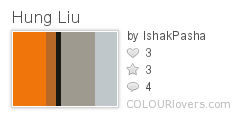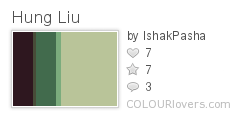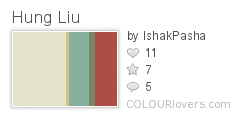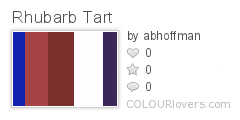We’re fortunate to have guest authors Megan Fizell & Cassandra Edlefsen share their collaborative colour series here on COLOURlovers. Their monthly colour project considers select artworks featuring one predominant colour within the context of the pigment’s history and in relation to natural edible form. Read more about the project at the bottom of this post. You can find the original articles on Feasting on Art. The one below is located here.
Hung Liu’s artistic production is a process of recollection – a symbolic excavation. Having weathered the re-education of artists vis-a-vis Mao’s Cultural Revolution and immigration to the U.S. in 1984, Hung Liu’s influences are richly transcultural. She is known as one of the very first Chinese artists to study within the U.S. and has since received numerous accolades for her dynamic work. Starting from anonymous photographs (often of unnamed Chinese prostitutes), Liu’s portrayals pair elements of tradition with contemporary critique. Vividly, her use of colour challenges her audiences’ emotive links to colour. In an interview she gave in 1995, Hung Liu refers to her vibrant use of colour, particularly red: “Red is an alarming color. We use red lights to warn people; to tell about danger and to use caution. In China, red is the color of the national flag. It is also the color of revolution; it suggests blood. Red also is used for celebration; it is festive and is used for such things as weddings, the Chinese New Year, and red banners. I like to work with layers of meaning.” (1)

Hung Liu, Yang, 2008
Quite literally layered, Yang, 2008, features a print of a prior work embedded in cast resin and superimposed with Liu’s signature use of historical Chinese motifs (here cherry blossoms) and thinned pigment dripped across the surface. Liu’s repetition of the dominant red background in the red of the woman’s crowning flowers and more intensely in her set lips, draws on the colour’s innumerable associations. Pairing a recipe to this painting requires a taste both strong and lingering – a rhubarb tart tinged with the spice of ginger and cayenne. Like the wavering paint drips, the straight lines of the recipe’s fresh rhubarb stalks melt into stringy red and pink ribbons. The bittersweet nature of the rhubarb paired with the delicately burnt molasses and speckled sesame seed crust recalls her subject’s strength of character and altogether tragic displacement in time – an otherwise lost history uncovered and commemorated by Hung Liu.
In parallel to Liu’s use of skills steeped in traditional technique and her constant reintroduction of layered meaning to her work, the classic rhubarb tart is brought full circle to its own origins. The rhubarb pie of Western origin meets the plant’s Chinese heritage in its combination with a sesame and buckwheat crust. Stemming from the buckwheat family, rhubarb has been used for centuries as a medicinal plant to cure a wide variety of ailments. It is this curative quality that perhaps best links the recipe with this work as it compliments Hung Liu’s desire to create memorial sites for lost memories – both celebrating and mourning their subject.
{Rhubarb Tart with Burnt Molasses & Sesame Seed Shells}
Burnt molasses and sesame seed shells:
2 tst butter
1 cup sesame seeds
2/3 cup brown sugar
2/3 cup buckwheat flakes
1/2 cup molasses
1 tsp cayenne
Inspired Palettes
![]()
The Project
The colour of a food or dish plays an important role in its appeal. Before tasting a tomato, we know that if it is green, it is unripe. These inherent expectations of the natural colouration of the world around us present an interesting challenge to artists. To represent skin tones in a portrait or the light hitting the flesh of a lemon, the right combination of colours must be mixed to determine the appropriate colour recipe for each painting. Some artists disregarded the traditional mode of colour representation and beginning with the Impressionists, colour was used to communicate emotion and highlight ephemeral experience. Colour has since been utilized as both form and symbol, as means for subjective expression, as a conceptual model and even to evoke realms of contemplation.
The monthly colour project considers select artworks featuring one predominant colour within the context of the pigment’s history and in relation to natural edible form. By coupling the art with a colour-specific recipe, we continue to investigate the properties of the colour of food in both their raw and cooked states. Each colour will be broken into two parallel posts, the first featuring a still life painting of food with a literal recipe translation and the second a work that capitalises upon the emotive qualities of the pigment with a conceptual recipe inspired by the mark-making technique.



